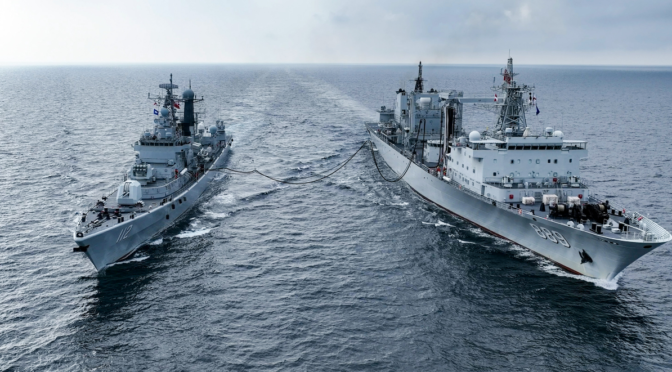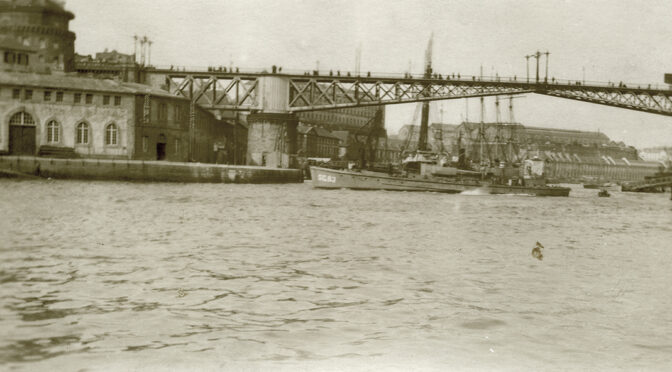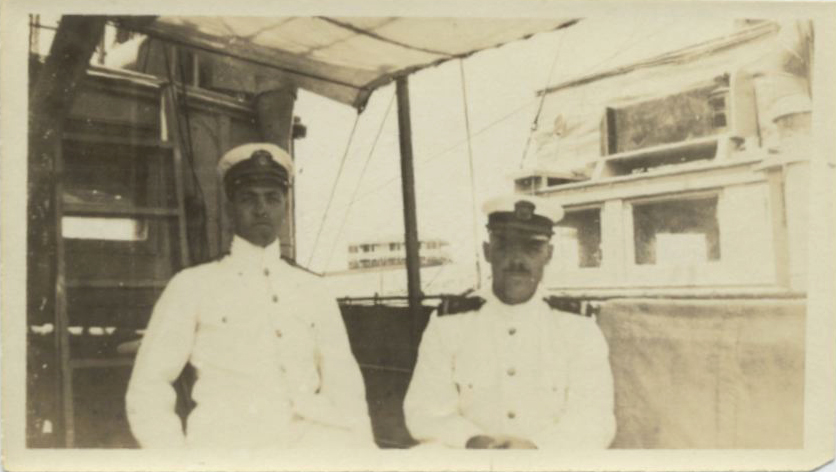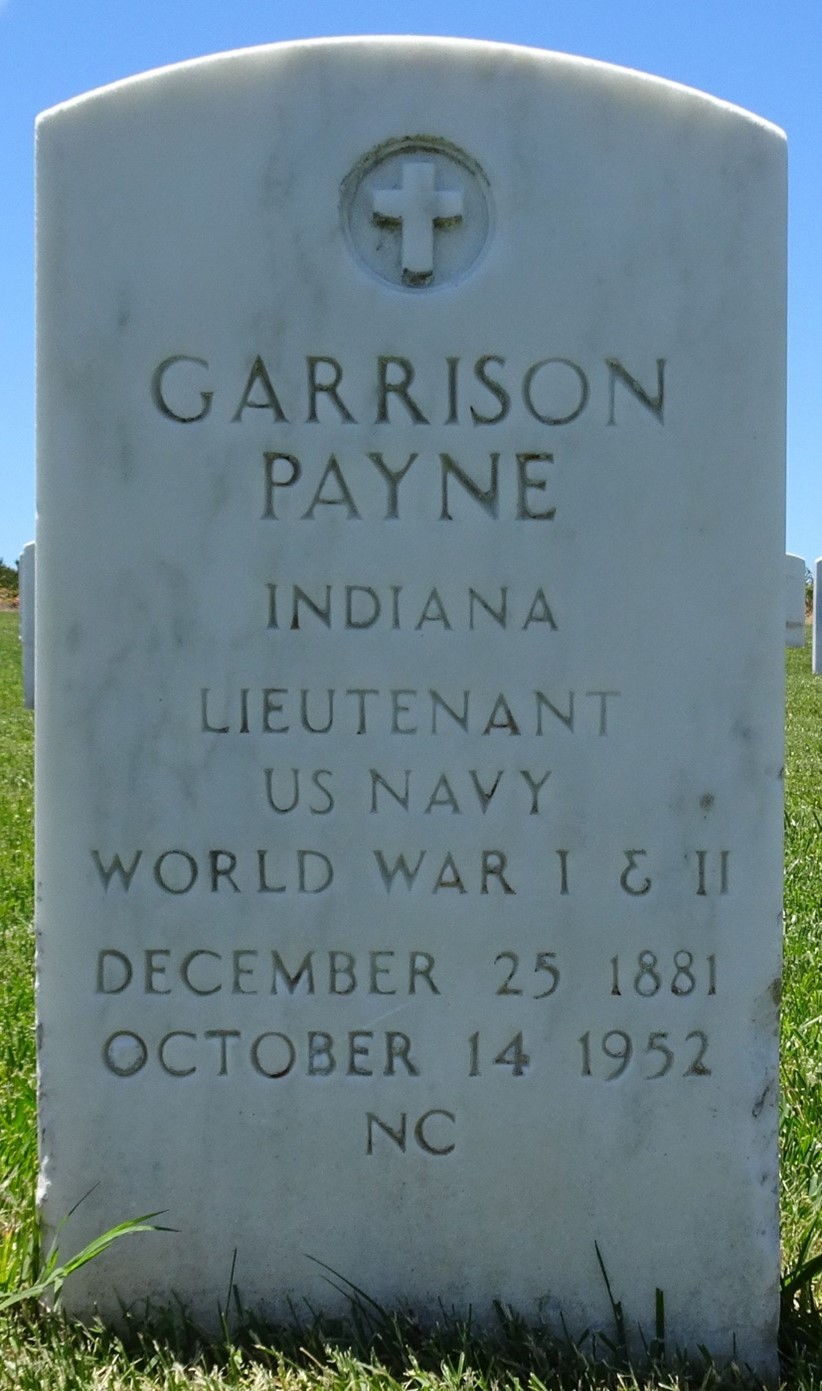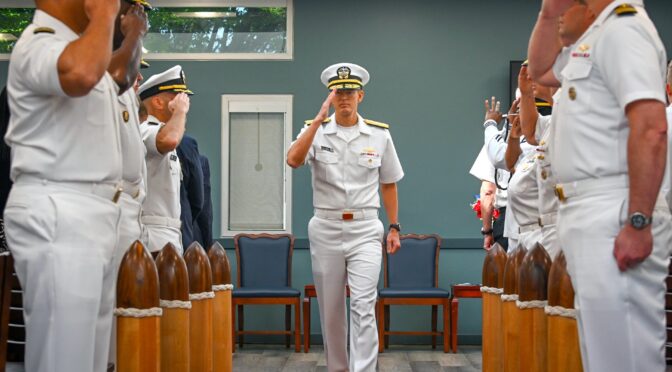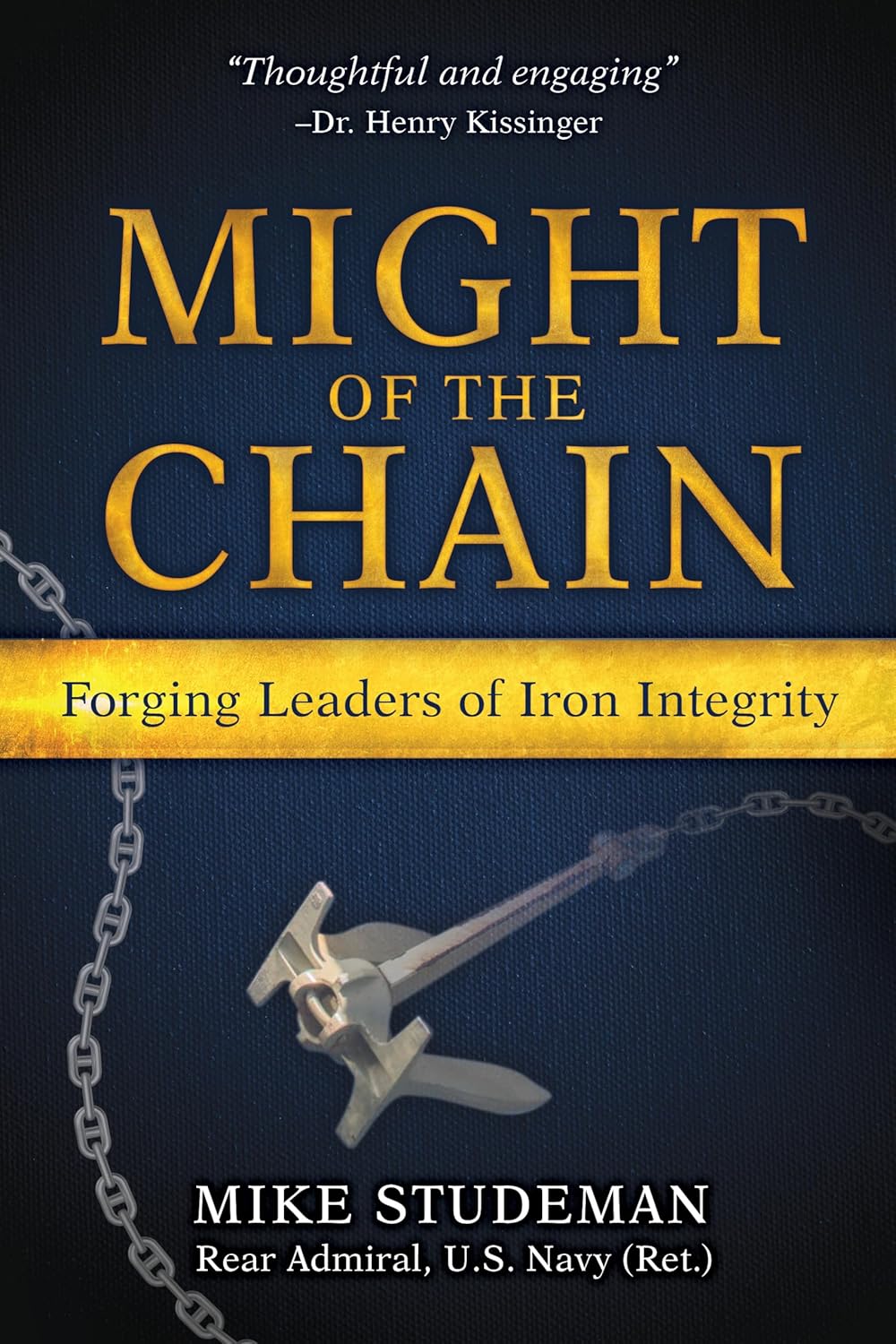By Jack Tribolet
Throughout history, war has tested human ingenuity, often deciding the fate of empires, nations, and ideologies. Imagine looking out over an active battlefield, the air thick with tension and kinetic projectiles. Each choice could alter history, and you suddenly have a consequential decision to make with lives on the line. This is not only a hypothetical scenario but a possibility for which junior officers must be mentally prepared. While proficiency in Tactics, Techniques, and Procedures (TTPs) is essential, broadening their understanding of the warfighting domains is equally important. This broader understanding can be achieved by studying military theory in a challenging era where the history discipline is contracting.1
Studying prominent military theorists before mid-level Professional Military Education would give junior officers a comprehensive understanding of the warfighting domains, enhancing their situational awareness and decision-making abilities. By studying theorists like Carl von Clausewitz, Alfred Thayer Mahan, and John Boyd before mid-level Professional Military Education (PME), junior officers can enhance their situational awareness and decision-making capabilities, increasing their lethality.
Dominant military theorists such as Clausewitz, Mahan, and Giulio Douhet provided perspective to their respective eras and domains of war, adding clarity and grammar to chaos. Others, such as Antoine Jomini, Julian Corbett, and Boyd, refined and built upon previous theorists, sometimes not amicably. For cadets, midshipmen, and junior officers, delving into the works of these great minds is not merely an academic exercise but an integral piece of their professional development. By studying military theory in officer accession programs, officers could gain additional tools to think critically and lead effectively, ensuring they are well-equipped to face the increasingly complex modern battlefield.
By understanding the evolution of warfare and the application of historical lessons to contemporary conflicts, officers can develop what the French call coup d’œil — “a glance that takes in a general view.”2 Clausewitz defined coup d’œil as an “inward eye” enabling a “rapid and accurate decision” that would typically only be perceived “after a long study and reflection.”3 Coup d’œil requires trained observation and an exhaustive look at previous campaigns—strategy, tactics, decision points, technology, and truisms—all best encapsulated by military theory.
The great captains of military history, Caesar, Napoleon, Patton, and Mattis, have demonstrated the value of applied military theory. Each read history voraciously, Napoleon famously stating, “Peruse again and again the campaigns of Alexander, Hannibal, Caesar, Gustavus Adolphus, Turenne, Eugene, and Frederick. Model yourself upon them. This is the only means of becoming a great captain, and of acquiring the secret of the art of war. Your own genius will be enlightened and improved by this study, and you will learn to reject all maxims foreign to the principles of the great commanders.”4 Therefore, the early introduction of this practice has infinite potential for the training of junior officers.
Defining Military Theory
Some might question the necessity of studying military theory before attending PME. To answer this, we need to understand the role of theorists. Clausewitz explains, “The theory of any activity, even if it aimed at effective performance rather than comprehensive understanding, must discover the essential, timeless elements of this activity, and distinguish them from its temporary features.”5
In other words, theorists identify and describe enduring principles of warfare. These principles remain functional across time and space, providing a framework for understanding historical and modern conflicts.
Niccolo Machiavelli, who predated Clausewitz by three centuries, said, “In peace he (the warfighter) should addict himself more to its exercise than in war; this he can do in two ways, the one by action, the other by study.”6 Machiavelli’s discourse recodified the ancient Roman way of citizen war and reintroduced the Roman practice of applied history. His treatise was placed on the first papal Index of Prohibited Books in 1559 for his effort.7 It is ironic that perhaps the premier military theorist, Clausewitz, had suspicions of applied theory, warning, “Theory can never lead to complete understanding, which is an impossibility, but it can strengthen and refine judgment.”8 He believed theory should “guide him [the warfighter] to self-education” and hazarded against it accompanying “him on the field of battle.”9
Despite Clausewitz’s warnings, studying theorists affords officers essential battlefield grammar: friction, center of gravity, lines of communication, strategic versus tactical bombing, and many more vital employable descriptive terms. Clarity in writing equates to clarity in thought. Many senior leaders use these terms colloquially, sometimes confusing an untrained audience, which prompted their quick introduction into the midshipman’s repertoire at the University of Southern California Naval ROTC unit so that they could decipher “Colonelese.”
Ultimately, studying military theory links the past and present in the officer’s mind, developing an internal timeline for the continuum of conflict and facilitating the identification of timeless principles from precedents. Clausewitz’s emphasis on enduring principles and Machiavelli’s advocacy for continuous study highlights the timeless relevance of military theory in developing critical thinking and decision-making skills.
Historical Context and the Evolution of Warfare
Individual theorists define their age, but more importantly, correspond to their chosen domain of war. Battlespace environments or military domains, defined by physical characteristics, require “unique doctrines, organizations, and equipment for military forces to effectively control and exploit in the conduct of military operations.”10 Consequently, theorist grammar produces the archetypes of their respective warfighting domain, defining the realm and rules for operation.
Prominent theorists can be assigned to domains as follows:
Land Domain
Clausewitz and Jomini, who fought against and with one another in the Napoleonic Wars, endeavored to describe the fundamental nature of war but ultimately became the golden standard for land-centric campaigns. Jomini spent most of his literary career struggling against Clausewitz’s ghost, calling his logic “frequently defective.” However, he provided a valuable counterbalance to Clausewitz’s theories.11
In the scrum of theorists, Clausewitz has emerged as the champion, peerlessly describing war as a “continuation of policy with the addition of other means.”12 However, while Jomini’s attempt to entirely “sciencefy” war failed, his concepts of interior lines and the application of force are integral to land domain comprehension.13
Sun Tzu, who predates Clausewitz and Jomini by two thousand years, remains shrouded in mystery as the author’s existence and when he wrote his treatise fall under scrutiny. However, Sun Tzu provides insight into Chinese war grammar and way of thought, which is valuable in light of the inevitable Taiwan Crisis. His use of creative naturalistic dialectical metaphors to tether common sense principles to practices is absent in Western literature. Using dialectical oppositional pairs to capture a concept challenges the Western military mind and provides insight into the pacing threat.14
Other prominent land theorists include Flavius Vegetius Renatus, Miyamoto Musashi, Gustavus Adolphus, Raimondo Mentecuccoli, Maurice Marshal de Saxe, Frederick the Great, Napoleon Bonaparte, Henry Lloyd, Helmuth von Moltke, B.H. Liddell Hart, and Heinz Guderian—an all-star lineup of some of history’s finest commanders.
Maritime Domain
Mahan and Corbett clashed on naval warfare in the age of the ever-enlarging capital ship, taking opposing views on employing fleets. Mahan advocated for decisive fleet-on-fleet battles involving capital ships, believing such engagements would determine naval supremacy. In contrast, Corbett viewed maritime power as a means to support land operations, emphasizing the importance of controlling sea lines of communication to ensure the movement and supply of land forces. These differing perspectives continue to influence modern naval strategy, as seen in the strategic deployment of carrier strike groups and the protection of critical maritime routes.
Other prominent maritime theories/theorists include La Jeune École, John and Philip Colomb, Herbert Richmond, and Hyman G. Rickover. However, due to the nature of maritime combat, naval theorists are as much technologists as strategists.
Air and Space Domains
Douhet, John Boyd, and John Warden arose in the 20th century with the advent of air power and had the difficult task of describing a rapidly shifting air domain. Douhet recognized the game-shifting application of air power in WWI and addressed the future of strategic bombing campaigns, which would shape Allied strategy in WWII. Boyd and Warden penned their concept of Strategic Paralysis in the aftermath of the precise bombing campaign of the Gulf War. Unsurprisingly, Boyd and Warden recognized the value of striking critical command and control centers; however, despite this leap in targeting capabilities, the priority of tactical versus strategic bombing remains in question, and both are seen in the current Ukraine War.15
Other prominent air theorists include Hugh Trenchard, William Mitchell, Thomas C. Schelling, and Robert J. Aumann. Unlike other domains, air power exists on an exponential technological curve, representing a formidable challenge for an air theorist to stay ahead of innovation.
Cyber and Informational Domains
Newest to the fight, these domains remain up for grabs for a future military theorist. The recently published Marine Corps Warfighting Publication 8-10 made a significant leap forward in informational doctrine, recognizing the new dimension of social media and access to information witnessed in the current Ukraine and Israeli Wars. Marine Corps Warfighting Publication 8-10 must become required reading for all military members, regardless of position or rank, as it concisely captures a new aspect of modern warfare.
In culmination, the warfighting domains encapsulate the entirety of warfare, each with unique doctrines, responsible organizations, and history. Participants in these domains must endeavor to comprehend their battlefield and dissect their associated theorists to gain situational awareness to develop a refined intuition.
Strategic and Tactical Proficiency
Unlike standard military history, theorists exist in the realm of application, deducing principles from precedents. Mahan cautioned against mistaking precedent with principle, “a precedent is different from and less valuable than a principle. The former may be originally faulty or may cease to apply through change of circumstances; the latter has its root in the essential nature of things, and, however various its application as conditions change, remains a standard to which action must conform to attain success.”16
Principles of war guide the development and refinement of TTPs. For example, understanding the “economy of force” principle can help officers allocate resources more effectively during operations.17 By grasping the theoretical foundations of their TTPs, officers can enhance their tactical proficiency and make more informed decisions in the heat of battle. TTPs ultimately reflect the handed-down knowledge from competent predecessors, thus representing an ever-changing chain of lessons learned.
For example, at the Battle of Midway, Lieutenant Commander Wade McClusky intuitively understood the Mahanian principle of a decisive naval battle enabled by his superior coup d’œil. Dangerously low on fuel, he continued the search for the Imperial Japanese Navy (IJN) carriers, putting his squadron into fuel extremis, knowing that he had to break his TTPs for the chance of decisive victory. McClusky’s actions at Midway demonstrate the practical application of Mahanian principles, underscoring the value of understanding military theory for effective decision-making. The IJN were strict adherents to Mahanian theory, and they forced Midway to become a decisive battle, just not in the manner they expected.18
Leadership and Decision-Making
Dominant battlefield methodology develops directly from technological innovation, and the rate of change increases the complexity of battlefield TTPs. Consequently, TTPs serve as a lagging indicator of technological progress. Increased complexity has downstream effects; as Clausewitz would say, “Everything in war is very simple, but the simplest thing is difficult.”19 The increased situational awareness gained by studying timeless military principles gives officers the required perspective in a fluctuating scenario to make critical decisions. “Just as water retains no constant shape, so in warfare there are no constant conditions.”20
When becoming an aircraft commander, pilots are expected to learn their systems in and out—limits, emergency procedures, and TTPs—which become second nature through study. The end state of this learning profile enables the aircraft commander to understand when and how to break procedures as McClusky did. This analogy applies to learning domain warfare—by understanding the domain paradigm—junior officers have the foundational knowledge to understand the cause and effect of sometimes necessary TTP rule-breaking in warfare decision-making.
Beyond domain comprehension, some theorists provide critical insight into the decision-making process. Boyd’s OODA Loop (Observe, Orient, Decide, Act) exemplifies how theoretical frameworks can enhance rapid decision-making, a crucial skill for junior officers in dynamic combat situations. For instance, during aerial combat, pilots who quickly observe the enemy’s actions, orient themselves to the situation, decide on the best course of action, and act swiftly are more likely to succeed. When internalized and practiced, this process can significantly enhance an officer’s ability to make rapid and effective decisions under pressure.
Case Studies and Practical Applications
Theory provides the realm of possibility, the domain’s boundaries, enabling a scenario-driven decision point. One example of a scenario-driven event is the Decision Forcing Cases (DFC) model used in the United States Marine Corps. DFCs represent a valuable tool for training cadets, midshipmen, and young officers. These scenarios encourage situational learning and critical thinking and facilitate stress through time restrictions and real-time instructor feedback.
However, instruction must include a deep dive into historical campaigns to maximize scenario-based theory learning and understand possibility boundaries. For example, an in-depth look at Napoleon’s conquest of Europe includes grand strategies such as logistical considerations and pairs them with tactical decision-making. Where do you apply force, and how?
Furthermore, what were the consequences of critical decisions made in the historical context? In 1812, Napoleon’s intuition failed him due to a lack of temperance. His Russian campaign provides a clear example of the importance of strategic decision-making. Initially aiming for a quick victory, Napoleon pressed on past his initial objectives, leading his troops deeper into Russia with Moscow in sight. This decision resulted in severe logistical challenges as supply lines stretched beyond their limits. The harsh winter compounded these issues, ultimately leading to an apocalyptic retreat where only 100,000 men of the 612,000 that crossed the border returned.21 Analyzing this campaign helps officers understand the critical balance between ambition and logistical feasibility in military strategy and should provide a warning to pair objectives with temperance.
A deep understanding of the continuum of change in war enables officers to identify truisms and trends, which expands their ability to anticipate further evolution—”Victory smiles upon those who anticipate the changes in the character of war.”22 The current conflict in Ukraine has spotlighted the real-time evolution of drone warfare. Consequently, future drone theorists and AI integration arbiters are likely already in the service or will soon be joining. These fundamental changes to warfare outline a ripe opportunity to deliver the grammar of these technologies into doctrine, thus necessitating these future service doctrine-writing members to have a firm grasp on previous theories as they initiate the testing phase.
Conclusion: Preparing Junior Officers for Modern Warfare
Integrating military theory into early education—officer ascension programs, and training would equip junior officers with essential principles for effective leadership and decision-making— coup d’œil. Officer Candidacy School, ROTC, and the academies must strive to add the study of theorists to curriculums inside and outside the classroom. Furthermore, this instruction must continue into active units, which could be as simple as guided discussion groups led by unit commanders. Military theory provides a framework for understanding historical and contemporary conflicts by distilling complex concepts into coherent truisms. Effective decision-making lies at the heart of officership, and studying military theory refines and strengthens this critical skill. As the adage goes, “He who desires peace should prepare for war.”23
By incorporating military theorists into their early education, junior officers and officer candidates engage with the primary sources of war, which better prepares them to lead confidently in the challenges of modern warfare.
Lieutenant Jack Tribolet is Assistant Professor of Naval Science at the University of Southern California ROTC and is the course coordinator for Seapower and Maritime Affairs. He is a naval aviator.
References
1 Bret Devereaux, “The History Crisis Is a National Security Problem, Foreign Policy, March 10, 2024. https://foreignpolicy.com/2024/03/10/the-history-crisis-is-a-national-security-problem/
2 Oxford English Dictionary, s.v. “coup d’oeil,” accessed July 8, 2024, https://www.oed.com/
3 Carl von Clausewitz, On War, trans. Michael E. Howard and Peter Paret (Princeton, NJ: Princeton University Press, 1989), 102.
4 Kevin Kinley, “Thumbing through the Napoleonic Wars: The Words of Napoleon and Others Who May Have Influenced His Methods,” The Napoleon Series, Accessed July 17, 2024. https://www.napoleon-series.org/research/napoleon/c_quotes.html
5 Clausewitz, On War, 11.
6 Niccolo Machiavelli, The Prince, trans. W.K. Marriott, (New York: NY, Fall River Press, 2017), 62.
7 John Lewis Gaddis, On Grand Strategy (Westminister: UK, Penguin Books, 2018) 110.
8 Clausewitz, On War, 193.
9 Clausewitz, On War, 4.
10 Michael P. Kreuzer, “Cyberspace is an Analogy, Not a Domain: Rethinking Domains and Layers of Warfare for the Information Age,” The Strategy Bridge, July 8, 2021. https://thestrategybridge.org/the-bridge/2021/7/8/cyberspace-is-an-analogy-not-a-domain-rethinking-domains-and-layers-of-warfare-for-the-information-age
11 Baron De Jomini, The Art of War (Radford, VA: Wilder Publications, 2008) 127.
12 James Holmes, “Everything You Know About Clausewitz Is Wrong,” The Diplomat, November 12, 2012. https://thediplomat.com/2014/11/everything-you-know-about-clausewitz-is-wrong/
13 Jomini, The Art of War, 77.
14 Gaddis, On Grand Strategy, 66.
15 David S. Fadok, John Boyd and John Warden: Air Power’s Quest for Strategic Paralysis (Maxwell Air Force Base, AL: Air University, 1995) 13, 23.
16 Alfred Thayer Mahan, The Influence of Sea Power upon History (Boston: Little Brown, 1902), 7.
17 Paul Murdock, “The Principles of War on the Network-Centric Battlefield: Mass and Economy of Force,” Parameters 32, no. 1 (May 2002): 86.
18 Jonathan Parshall and Anthony Tully, Shattered Sword: The Untold Story of the Battle of Midway (Dulles, VA: Potomac Books, 2005), 215-216.
19 Clausewitz, On War, 119.
20 Sun Tzu, The Art of War, trans. Lionel Giles, (New York: NY, Fall River Press, 2015) 69.
21 T. Editors of Encyclopaedia Britannica, “French invasion of Russia,” Encyclopedia Britannica, July 11, 2024. https://www.britannica.com/event/French-invasion-of-Russia.
22 Giulio Douhet, The Command of The Air, trans. Dino Ferari (Eastford, CT: Martino Fine Books, 2020), 30.
23 John Clarke, “De Rei Militari by Flavius Vegetius Renatus” in Roots of Strategy: The 5 Greatest Military Classics of All Time, edited by Thomas R. Phillips, (Mechanicsburg, PA: Stackpole Books, 1985), 124.
Featured Image: Painting “Rescue of the crew of Achille during the Battle of Trafalgar,” by Richard Brydges Beechey, 1884. (Via Wikimedia Commons)

